by Dr. M | Aug 23, 2019 | Contact Lenses, Exam, Eyeglasses, Glasses, Mark Moran, Office, Patient Care, Prescriptions, Procedure, Vision
What is the first test we do when you come into the office for a complete vision exam?
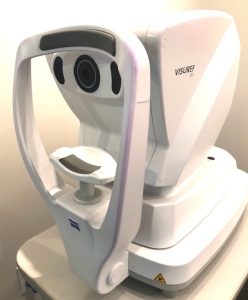
The Autorefractor measures your prescription
We take a measurement of your vision with the AutoRefractor.

Focus on the balloon!
When you take a seat at the autorefractor, we ask you to look into the device. You will see a blurry hot air balloon at the end of a long straight road. As the balloon comes into focus, we measure your prescription.
We ask you to focus on the image (balloon) to keep your eye centered while we take measurements. It only takes just a few seconds to measure using an autorefractor. The balloon is at the center of the image, which aligns your eye perfectly for the test.
When we use this machine, nothing touches your eye, and there is no puff of air!sisipisi.ccsisipisi.ccsisipisi.ccsisipisi.ccsisipisi.cc
The autorefractor provides an objective measurement of a person’s refractive error and prescription for glasses or contact lenses. The device measures how light is changed as it enters your eye.
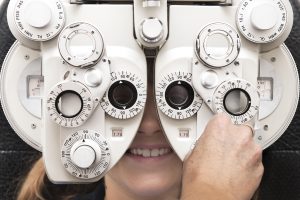
Better 1 or Better 2?
We don’t use the numbers from the device to order your prescription glasses or contacts. The autorefractor is just part of the process. The information from the autorefractor is used as a starting point to determine your best prescription. We take these numbers and dial them into the phoropter.
Here is where your opinion comes in. As we cycle through lenses, we ask, “Is it Better 1 or Better 2?” Your responses help us to pinpoint your best vision. When we show you different choices, we aren’t trying to trick you! We are showing you different options to find your best correction.
Why do we use a balloon photo?
The image isn’t important, but the need to focus on something at a distance is key to a good measurement. The balloon is just one of many visual targets used in the autorefractor. Besides the hot air balloon, other popular images include: a pinwheel/peppermint candy, a house (or barn) at the end of a road, a house in the middle of a field.
FOR MORE INFORMATION CLICK HERE…
by Dr. M | Aug 20, 2019 | Contact Lenses, Cornea, Eye Safety
It’s hard to find someone who doesn’t wear contact lenses, has worn contact lenses in the past, or knows someone who wears contact lenses. The Center for Disease Control (CDC) has declared August 19th to the 23rd contact lens health week. https://www.cdc.gov/contactlenses
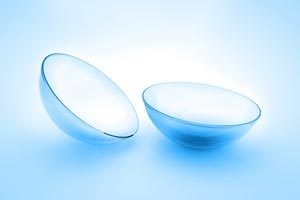
Soft contact lenses
That’s right…the CDC is concerned about contact lenses! Contact lenses are medical devices, just like a heart pacemaker or an insulin pump. Contact lenses have been in use for over 100 years and during that time the technology behind them has progressed and been perfected. For that reason, complications and problems with them are less common. However, that only applies if they are used as prescribed.
Human nature is when you are comfortable with a situation, you may take some shortcuts regarding safety. Because contacts are considered so safe, most contact lenses users are prone to intentionally and unintentionally cut corners. Take the advice of Dr. Tang, Dr. Moran, and the CDC: DON’T TAKE SHORTCUTS!
Here are a few key reminders on handing and wearing your contact lenses.
- Don’t sleep in your lenses.
- Tap water, hot tub or swimming pool water are not good for your contact lenses.
- Wash your hands before handing your lenses.
- Follow your eye doctors instructions for use of your case and disinfecting solutions.
- Replace your contact lenses case every 3 months.
- Replace your contact lenses as prescribed.
- See your eye doctor as recommended.
Contact lenses are safe when used appropriately, but things can go very bad if they are used improperly. You INCREASE your risk of permanent vision loss when you don’t follow the instructions above! Be safe and enjoy your contact lenses: follow the rules.
by Dr. M | Jul 17, 2019 | Contact Lenses, Donate, Eyeglasses, Glasses, Sunglasses, Vision
If you care enough to recycle, we can help!
Bring your recyclable vision items into our office, and we’ll take care of the rest!
EYEGLASSES:
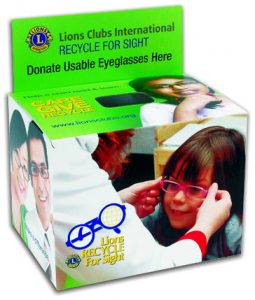
We have a donation box in our office!
Bring your used glasses to the office. We have a collection box for the Lions Club “Recycle Your Sight” program. The donated glasses are measured and then distributed to people who match the prescription. Your donation can help a child to be successful in school, allow an adult to get a job, or a keep a senior citizen living independently.
We accept any type of glasses: distance, reading and sunglasses too! Safety glasses are also welcome. If you have a glasses case, we can accept those too. But don’t worry if you no longer have the case, we will wrap them so they arrive at their destination safelysisipisi.ccsisipisi.ccsisipisi.ccsisipisi.cc.
CONTACT LENS PACKAGING:
While you may be aware that the contact lens boxes can be recycled through your municipal recycling program, did you know that the blister packs can be recycled too?
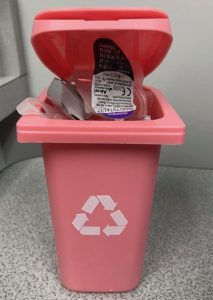
Recycle your contact lens packaging!
Our office takes part in a recycling program that accepts specialty packaging…including the foil and plastic of blister packs. If you wear daily contacts, you are throwing out two containers each day. Multiply that times 30 days/month, 365 days/year…it adds up! Especially when you consider how many patients wear contacts,
Don’t put them in the trash! Collect your discarded containers and bring them into the office. We will send them to our recycling program, and eliminate all of that waste. Recycling small things can make a big difference.
PLUS…for every qualifying shipment a donation will be made to Optometry Giving Sight. This nonprofit organization works to prevent blindness and impaired vision for those who do not have access to eye exams and glasses/contacts. For more info, visit: http://www.givingsight.org
Partner with Moran Eye Associates in recycling.
Working together, we can make a difference!
by Dr. M | Feb 11, 2019 | Contact Lenses, Education, Exam, Experience, Eye Safety, Procedure

What is a Stye?
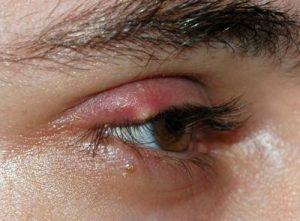
Styes develop along the lash line.
A stye is a painful swollen spot in the upper or lower eyelid, near the lash line. The stye develops due to an infection in the eyelash follicles or oil glands at the lid margin.
The inflamed area may be tender to the touch. It appears as a red bump, possibly with a yellowish spot where pus has collected, like a pimple. It can occur on both the upper and lower eyelid, and is common in both children and adults. Styes develop gradually and sometimes go away on their own.
Home Care: What should I do if I feel a stye developing?
- Apply warm moist compresses 10 minutes 4 times a day.
- Keep your eyelids clean. Use warm water and baby shampoo on a cotton ball.
- STOP wearing eye makeup. Covering up a stye may slow your healing.
- Don’t wear contacts. Wear your glasses until the stye is gone.
- Wash your hands! Keep your hands clean and don’t share washcloths or towels with others.
- Do NOT Squeeze! Styes should not be squeezed or punctured at home.
When should I see the doctor?
If the stye is painful, causes vision problems, or does not improve after a few days, call for an appointment. You may need medication to treat the infection. When in doubt, pick up the phone and give us a call. We are always willing to discuss your symptoms and bring you in to the office if needed.
After your eye is healed, it is important to replace all of your eye makeup that has come in contact with your infected eye. That includes eyeliner, mascara, concealer and eye pencils.
Is there any way to prevent a stye?
A stye develops due to a blocked pore, so it makes sense that keeping your eyelids clean is the best way to prevent styes. Don’t sleep in your makeup! Take the time to remove ALL makeup before you go to bed each night. Replace your eye makeup every six months, and don’t share it with others.
Cleanse your eyelids in the morning as well to keep the lid margins clear. The crusty discharge that accumulates overnight in the corners and on the lashes should be cleared away with the warm water and baby shampoo method.
To read more about keeping your eyes healthy…scroll through the Moran Eye Associates blog. You’ll find helpful information on eye care from our doctors and staff.
by Dr. M | Jan 30, 2019 | Contact Lenses, Cornea, Education
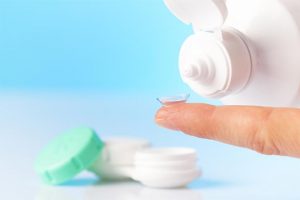
Contact Lens Solution
The largest risk of infection for contact wearers comes from improper use and handling of the contact lenses.
Contact lenses are convenient, comfortable and simple-to-use. It’s easy to forget that they are medical devices that need to be carefully used and stored – free from bacteria, dirt and germs.
Are you at risk for infection?
Almost one million cases of eye infections due to contact lens misuse were reported in the U.S. in just one year. Misuse can be due to many reasons, including wearing your lenses too long, not following prescribed wearing schedules, sleeping in your lenses, and not cleaning your lenses properly.
The Center for Disease Control reports that 99% of contact lens wearers have worn, washed or stored their lenses in unhygienic ways. If you have bad contact lens habits, it’s time to change, and follow the rules we’ve outlined for you.
 ALWAYS follow these 6 simple rules to prevent infection
ALWAYS follow these 6 simple rules to prevent infection
1. Wash your hands with soap and water before handling your contact lenses…EVERYTIME!
2. Take out your lenses before showering, swimming and sleeping (naps & overnight).
3. Rub your lenses with disinfecting contact lens solution after you remove them. Don’t use water to clean your lenses!
4. Use fresh solution every time you store your lenses. Never add clean solution to “top off” old solution.
5. Replace your contacts as directed…don’t wear two week contacts for 30 days! Wearing your contacts past the recommended usage date can cause bacteria and germs to accumulate. The lenses may tear or deteriorate after prolonged use. When in doubt, throw them out!
6. Keep your contact case clean, rinse with disinfecting contact lens solution and let dry completely! A dirty contact lens case can be a breeding ground for bacteria. Replace your contact lens case every 3 months.
Why do you need to follow these rules?
Contact lens infections (keratitis) can be painful, and in the worst case scenario, can cause permanent scarring and even blindness. If you have developed bad lens wearing habits, stop now!
No sleeping in contacts. No swimming or showering in contacts. No dirty contact cases.
Questions? Dr. Bianca Tang is our contact lens expert. Let her work with you to find the best lenses and the best fit to give you the vision you’ve been looking for. Fill out the form to the right to contact our office for an appointment, or call us at 610-628-2022.
by Dr. M | Dec 27, 2018 | Cataracts, Contact Lenses, Diabetes, Dry Eye, Eye Safety, Eyeglasses, Floaters, Glasses, Glaucoma, LASIK, Low Vision, Macula, Procedure, Retina, Surgery, Vision
A patient asked the other day, “Do you do regular eye exams?”
Of course we do! At Moran Eye Associates we offer Complete Eye Care, which includes Vision, Medical and Surgical services.

Better 1 or 2?
VISION: We accept VSP & NVA
- Routine Eye Exams
- Contact Lenses: Traditional & Specialty Lenses
MEDICAL: We accept most medical insurancessisipisi.ccsisipisi.ccsisipisi.ccsisipisi.cc
- Diabetic Eye Care: Diabetic Retinopathy
- Glaucoma Care: Medical and Surgical Treatment Options
- Macular Degeneration
- Dry Eye Treatment: Diagnostic Services & Thermal Therapy
- Eye Emergencies
- Infection/Inflammation
- Low Vision Services
SURGICAL: Dr. Moran does surgery at the Surgery Center of Allentown, Sightpath LASIK Center in Bethlehem, as well as some procedures in our Delaware Avenue office.
- Cataracts
- LASIK
- PRK
- Laser Floater Removal
- Glaucoma Eye Surgery
- Foreign Body Removal
- Eye Lid Surgery
Please contact our office if you need an appointment for your eye care. Call or text us at 610-628-2022, or send us an email by filling out the form on the right!


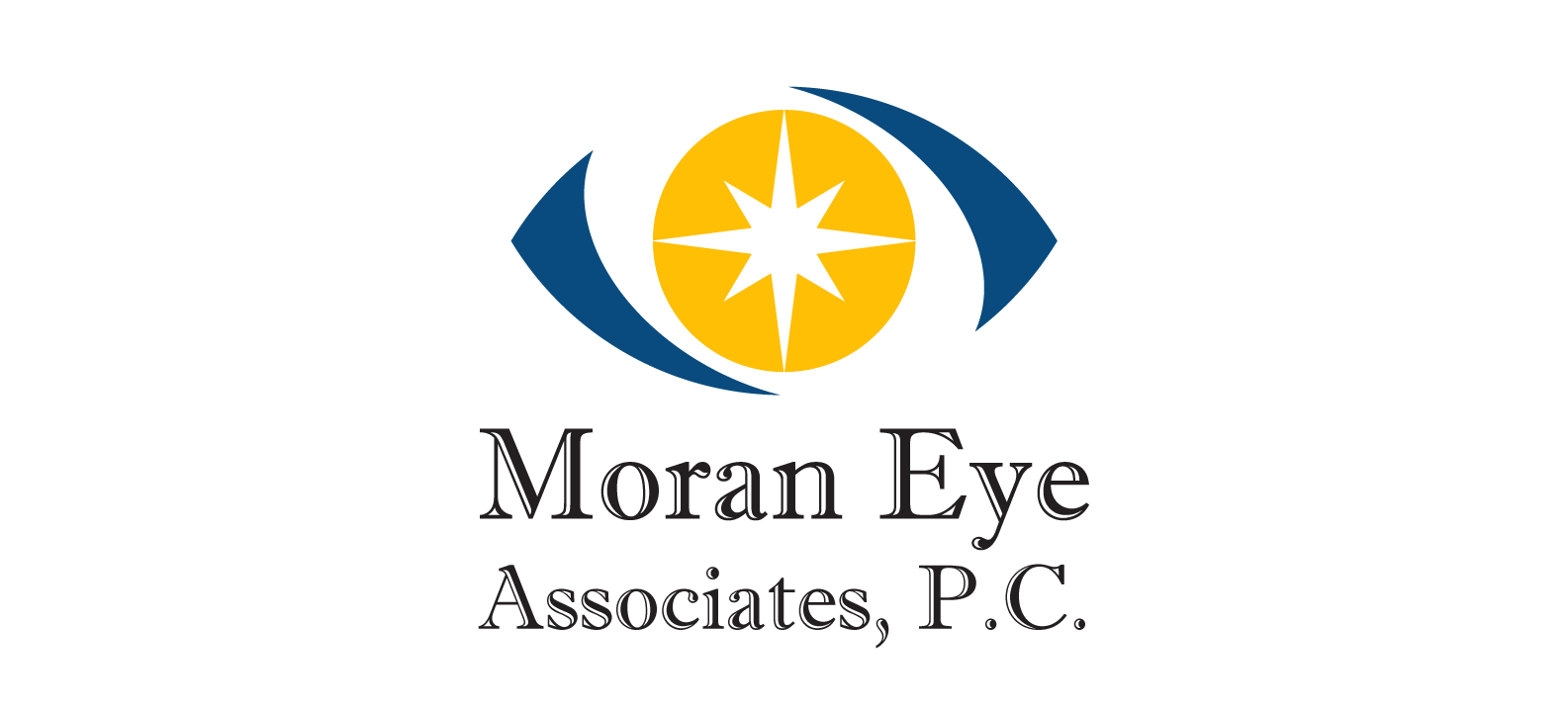







 ALWAYS follow these 6 simple rules to prevent infection
ALWAYS follow these 6 simple rules to prevent infection